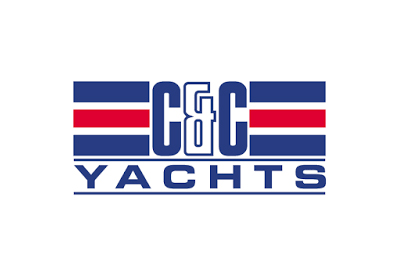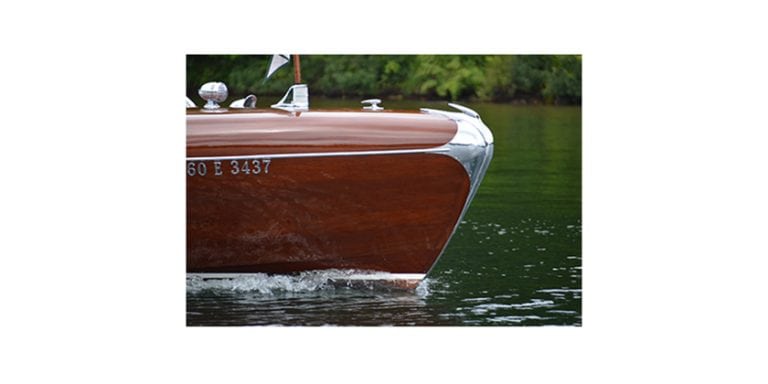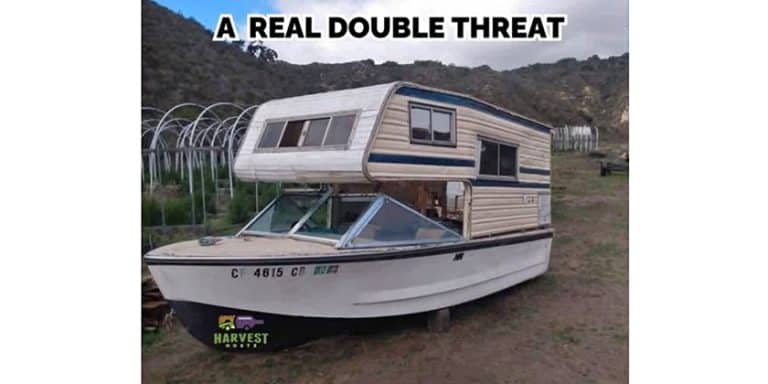CYOB Inbox – C&C Project

Feb 14, 2019
We received this note from a young person that led to a particularly interesting conversation.
Dear Mr. Kerrwil,
My name is Tara Zhan and I am a grade 6 student at Sir William Osler in Vancouver. I am currently studying the heritage and impact of C&C Yachts. Could you help me answer the following questions and reply by February?
1. What were some of the largest impacts that C&C Yachts made on Canadian sailing history?
2. What were some of their most notable boats?
3. What caused C&C Yachts to be so successful, and what caused them to break apart?
Thank you for your time, and I hope to hear from you soon.
Sincerely,
Tara
We were successful in connecting Tara with Rob Mazza, who we felt would be the perfect person to address Tara’s questions.
Hi Tara
I am the editor of Canadian Yachting OnBoard online newsletter. I was pleased to receive your email and shared it with Rob Mazza. We both felt your questions are very astute.
Rob worked at C&C for many years and I would venture to say he knows more about the company than most people. He has written quite a bit about the company and its people and takes a huge interest in the history of Canadian sailboats.
Rob will send along his insights into the questions and I plan to also publish the exchange in CY OnBoard
I wish you good luck with your studies and am interested to know what prompted you to consider learning about C&C. Does your family own a boat?
Rob will be back to you in short order, I am sure.
John Morris
Johnmorris@kerrwil.com
Online Editor
Rob was eager to help. Here’s his note to Tara (with his permission)
Hi Tara,
I’m greatly impressed with your interest in C&C Yachts. I have tried to answer your very perceptive questions in the attached document. I also refer to an article in a past issue of Professional Boatbuilder magazine by Dan Spurr.
I was a Senior Designer with C&C Design Group, starting as a student while still at university in 1968 and staying with then until 1985. I then moved on to design with C&C alumnus Mark Ellis, then moved to Florida to design with Hunter Marine. I’m now retired, living and sailing in Hamilton, Ontario. I also write for Good Old Boat magazine, a magazine aimed specifically at owners of older fiberglass sailboats, which includes a lot of C&C owners. (Sorry John!)
I’m pleased you have taken an interest in sailing after a trip the Maritimes, and hope that you can find a good sailing school in the Vancouver area to further develop your sailing skills. There are also many C&Cs in the Vancouver area. I hope, possibly through your sailing school, you will get an opportunity to sail on one. I have some sailing contacts in the Vancouver area, so if you would like, I could contact them to see if we can get you and your family out sometime next summer.
Tara, I look forward to hearing back from you, and I hope the attached document answers some of your questions.
Rob
Tara was eager to learn more.
Hi Mr. Mazza,
Thank you so much! The document answers a lot of things I wanted to know about C&C, and I’m very thankful that you were able to take out time from your day to help me. I do have a couple more questions about the racing of C&C yachts, specifically the controversial boat Evergreen.
1. What was the largest impact of the Evergreen racing in the Canada’s cup?
2. Did it have more of a positive or negative effect, seeing as C&C was never commissioned to build another boat for racers in the Canada’s Cup?
If this isn’t your area of expertise, I understand, since you were a senior designer and not a racer. I was having trouble finding sources on C&C’s racing boats.
Thanks again,
Tara
Hi Tara,
As you have probably heard, Evergreen was a very controversial boat in her day. However, she represented the trend in yacht racing at the time to “bend” or exploit the design rule as much as legally possible. The “rule” in effect at the time was the International Offshore Rule (IOR) which became the norm for offshore racing in 1970, and by 1978 the weaknesses in the rule were being aggressively exploited by all designers. One of those weaknesses was the treatment of centerboards and daggerboards, as opposed to fixed keels, and two others were the treatment of maximum beam and righting moment. Evergreen, and a number of other boats, took full advantage of those weaknesses in the rule (for example, a boat called Terrorist, designed by Bruce King actually had two retracting bilge boards!). Most of these “exploitations” were soon outlawed or corrected with the subsequent variations of the rule. However, despite being a “rule beater”, Evergreen was still a remarkable boat. Her “gybing” lift keel was a work of art!
At that time, there was also a movement to design boats for the conditions they were most likely to encounter in their racing careers, rather than for the worst that Mother Nature could possibly inflict. The Canada’s Cup racing would involve two or three short “course” races, a middle distance race (each scored at one point each), and only one long distance race scored at 2 points. So it made more sense to design the boat for the shorter “in-shore” races, rather than the long distance race, so safety factors (in the design of the rig for example) were reduced to about 80% of ultimate, with the result that Evergreen lost her mast twice!
However, it was the disastrous 1979 Fastnet Race in England in 1979 which really focused the world’s attention on the types of boats being encouraged by the IOR rule, which led to a movement to replace the IOR rule with a true handicap rule known as the International Measurement System (IMS) in the late 1980s and early ’90s. Evergreen actually raced in the ’79 Fastnet (and survived) as part of the Canadian Admirals Cup Team. So, while C&C designs did not compete in the following Canada’s Cup racing in 1981 and 83, they did form the entire Admirals’ Cup team in 1983 with Amazing Grace, Charisma, and Majistry. That team would have finished 3rd, except for a penalty imposed on Charisma for not carrying her life-raft in one of the inshore races! Actually, I believe that Amazing Grace, and possibly Charisma, may now be in the Vancouver area.
Two very good books on Evergreen are “Against the Odds” by Doug Hunter, which discusses the whole 1978 Canada’s Cup campaign as well as the ’79 Fastnet, and “Beyond Endurance” by Adam Mayers, which focuses on the Canadian Admirals’ Cup team during the ’79 Fastnet. The definitive book on the ’79 Fastnet, of course, is John Rousmaniere’s “Fastnet Force 10
By the way, even as a Senior Designer for C&C, I did race extensively on C&C product, specifically in the 1975 Canada’s Cup on Marauder, and the 1981 and ’83 Admiral’s Cup in Amazing Grace and Charisma, as well as SORCs, Bermuda Races, and Long Island Sound and Great Lakes races on a number of different C&C designed and built boats. Those were very good years for any of us in the Canadian boat business at the time! We were very fortunate. I’m sure John will agree. 😉
Tara, I’m not sure that answers all your questions, but I certainly have enjoyed telling you all about it, and I thank you for your interest.
Let me know what address I can ask Don to send those books. That make good reading.
All the best, and let me know if I can be of further help.
Rob
Hi Mr. Mazza,
Thanks so much for your help. I probably won’t need much more information, as our project information gathering time will end soon. There is so much more I want to learn about Canadian sailing history now!
Sincerely,
Tara
And below are Rob’s answers to Tara’s initial questions. What a story!!
For Tara Zhan, grade 6 student at Sir William Osler in Vancouver
1. What were some of the largest impacts that C&C Yachts made on Canadian sailing history?
C&C Yachts was formed in 1969 with the amalgamation of three boat builders – Hinterhoeller Yachts, Belleville Marine, Bruckmann Manufacturing – with the design and marketing firm of Cuthbertson & Cassian. All three builders were building Cuthbertson and Cassian designs. The impetus for this amalgamation was the 1968 Sothern Ocean Racing Circuit (SORC) overall victory of the Cuthbertson & Cassian designed, and Bruckmann built Red Jacket. The amalgamation allowed C&C Yachts to go public and sell shares to raise money for expansion of the new company.
The boats that C&C built in their Custom Division (formally Bruckmann Manufacturing) established an enviable reputation on the race course, while the Production Division (formally Hinterhoeller Yachts) produced higher volume production dual purpose Racer/Cruisers for the general public. The formation of C&C Yachts coincided with a rapid growth in recreational sailing brought on by a pent up demand after many years of economic depression and the 2nd World War, combined with the introduction of higher volume, lower maintenance, fiberglass construction. Therefore, C&C, as well as a number of other Canadian and US builders, were satisfying a rapidly growing demand for fiberglass sailboats.
What made C&C distinct from its many competitors was this combination of Custom and Production boatbuilding utilizing the same design office. Success of the custom yachts in International offshore racing at the highest levels established the C&C Design office as a major player. This success increased the reputation and demand for their production boats. Add to that the level of quality that permeated through the whole company, from design to building, through sales and marketing, C&C some established itself as a major player in the North American market and was making inroads in Europe.
C&C Yachts established Canadian designed and built boats as leaders in the market. Even more than 20 years after the close of the company, C&C boats are still in high demand on the used boat market. The C&C brand name was so popular, that it was purchased with assets of the company by Tartan Yachts in the US, and a new line of product was produced under the C&C name.
The impact that C&C had on Canadian sailing history was in its many race winners – Red Jacket, Manitou, Bonaventure, Sorcery, Arieto, Charisma, Silver Shadow, Majistri, Evergreen, and many more – and in making sailing accessible to a large portion of the middle class, especially in Canada and the US. C&C introduced a lot of families to sailing, and these boats often get passed on from one generation to another.
Therefore, the largest impact would have to be the establishment of a well-regarded Canadian fiberglass boatbuilding industry, and the introduction of so many families to the joys of sailing, both racing and cruising.
For more on the history of C&C see here, as well as the article from Professional Boatbuilder magazine attached.
2. What were some of their most notable boats?
This is a question that generates a lot of different opinions. I’ve listed some of the names of the custom racers above for the SORC, Canada’s Cup, Admirals’ Cup, and Bermuda Race. In addition to these “one-offs”, the custom shop, under Erich Bruckmann, built a number of Semi-Custom limited production yachts. The best known and more successful were the Redline 41, the C&C 43, C&C 50 and the C&C 61, and later the C&C 41 and 44. The most successful cruising boat was the 67’ schooner Archangel, as well as the larger Landfall line, such as the Landfall 43 and 48.
The production plant in Niagara-on-the-Lake, established by George Hinterhoeller, built a large number of boats from 24’ to 40’. Deciding which were the best of these is largely a matter of personal preference. However, the C&C 27, 30, 34, 35, 37, 39, and 40 all deserve mention, as well as the later 34/36 and 37/40.
In my opinion, the most significant custom boats were the 40’ Red Jacket, 54’ Bonaventure, C&C 61 #1 Sorcery, C&C 43 Arieto, 41 footers Silver Shadow and Charisma, and 42’ Evergreen, but other sailors might differ.
My choice for most significant production boats would include the C&C 27, 33, 35, and the C&C 40, but again, others may want to include many more. I left C&C in 1985, so am not as familiar with the boats built after that as I am with the boats built prior to ’85.
However, it all started with Red Jacket, a boat which is still going strong after 52 years!
3. What caused C&C Yachts to be so successful, and what caused them to break apart?
I’ve explained the conditions that resulted in the creation of C&C Yachts in the first question, as well as the factors that resulted in their success. The reasons for the failure of the company are a bit more complicated and are tied in with the reasons for the collapse of the whole sailboat market in the late ‘80s and early ‘90s. In that regard, C&C was not the only company that went out of business.
Saturation of the Market – The quality that was built into a C&C yacht meant that they lasted a long time. I own a 50 year old C&C Corvette 31! So, if you wanted to get into a C&C there were a lot of them available on the used boat market at considerably less money than a new one. C&C, like a lot of boat companies, ended up competing against its older boats. This often led to rapid model changes to introduce new product, which was not economically sustainable.
Splintering of the Market – By the 1980s the sailboat market was starting to splinter between all out racing boats and comfortable cruising boats. C&C tried to counter this with the introduction of the Landfall line of cruising product. The demand for the dual purpose racer/cruiser was diminishing, and could be satisfied on the used boat market as mentioned above. At this time, as well, the IOR handicap rule had been badly abused and was being replaced by the more complex IMS rule which drove a lot of the racing market to one-design sailboats built by J/Boats and Carroll Marine. Racing sailors were abandoning handicap offshore racing in favour of one-design around the buoys racing.
The French Invasion – During this period competition increased dramatically from economically priced French built boats from Beneteau, Dufour, and Jenneau entering the North American market. These boats had more of a European flair, and were different enough from US and Canadian boats to generate interest above and beyond their competitive prices. North American builders, including C&C, had tried to crack the European market, but were not successful, often due to currency fluctuations. These fluctuations which worked against North American builders, now worked in favour of European builders.
Free Trade and the Luxury Tax – During this time period the Canada/USA Free Trade agreement was negotiated, which opened the Canadian market to lower price US built boats, as well as French boats. Also at this time, the US government imposed a Luxury Tax on all “yachts”, which had a disastrous effect on all North American boat builders. This alone forced a lot of builders out of business.
Growth of Other Leisure Activities – Sailing was no longer the only popular water sport. Powerboating, sportfishing, windsurfing, water skiing, canoeing and kayaking, not to mention the growth of recreational vehicles, offered recreational alternatives to many families.
Change in Societal Expectations – The family had now evolved into often two working parents with much tighter schedules and time constraints which sometimes did not allow sailing as an option, especially if one of the couple was not comfortable with that activity. This is a less concrete reason for the decline of C&C yachts and the sailboat industry generally, but I don’t think should be completely discounted.
Tara, you have asked three very perceptive questions which strike to the heart of the C&C phenomena. I hope I have been able to answer them to your satisfaction.
Please get back to me if I can be of further help.
Rob Mazza
January 28th, 2019





























